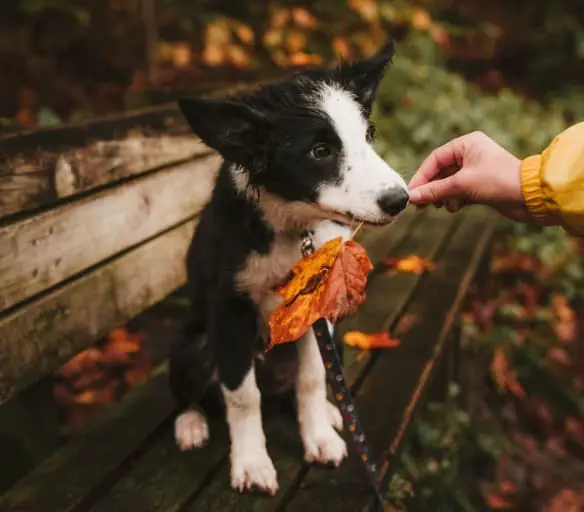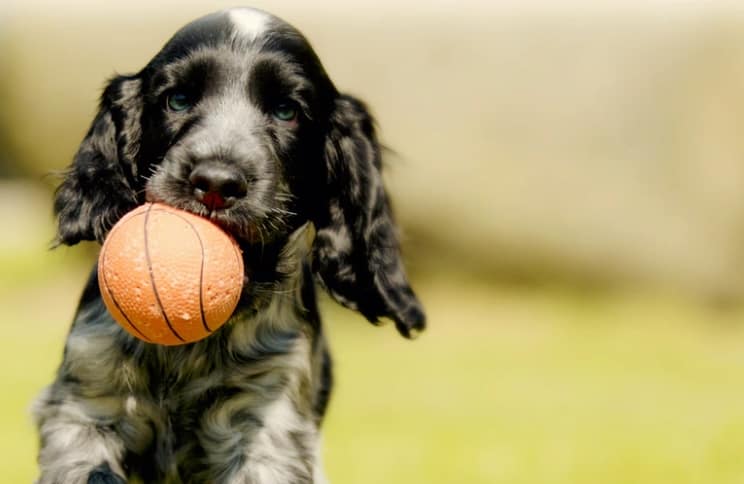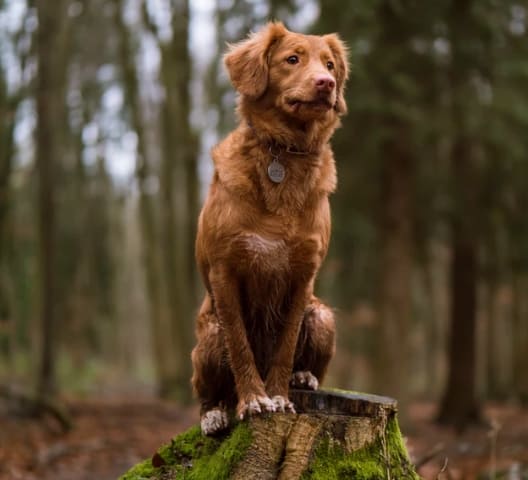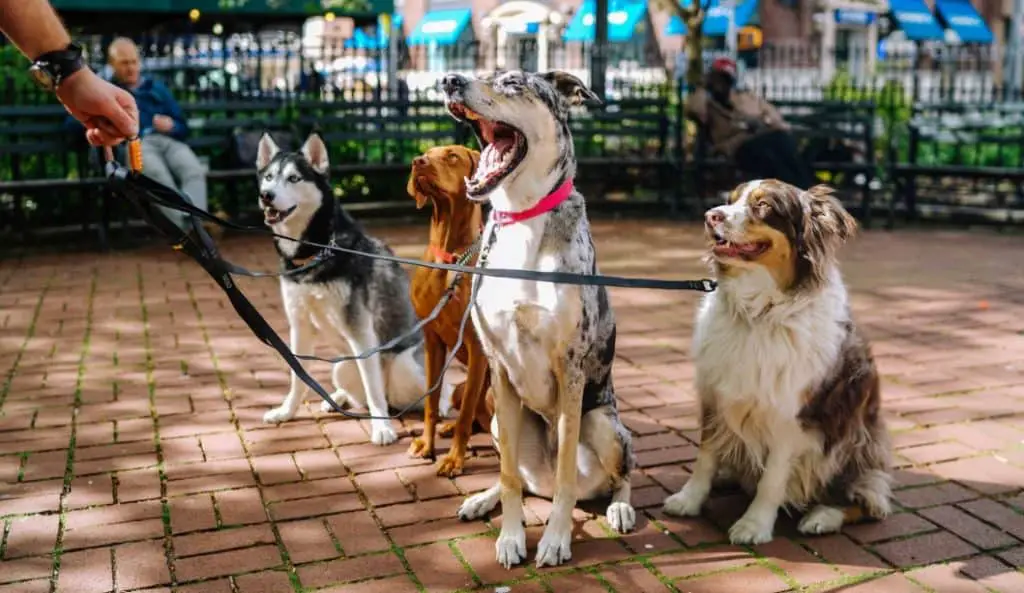As an Amazon Associate I earn from qualifying purchases.
Our Associate portal can be found here
Hunting dog obedience training is a process which requires consistency and dedication. You got to start training your dog as a puppy to adulthood to enable him to reach his full potential. Structure your training program well from creating exposure and other hunting training skills guided by basic commands.
Some of the basic obedience commands include Sit, Down, Leave it, Load into Kennel, Quiet, Off, Load into Truck, Stay, Wait at Door, Come, Stay, and Heel. Most hunting dog owners will confuse the dog by loading too many commands, at a time, or letting frustrations get in their way. Let’s find out more about hunting dog obedience training.
How Do You Start Training as a Puppy
Puppies experience mixed environments of fun, growth, and intimidation during the first few months. This environment created, is by other pets or dogs around them and people. If you teach good habits to your puppy while still young, it will grow into a hunting dog with full potential and obedience basics. Here, we will look into how you can start obedience training with your puppy.

Socializing With Your Pup
The dog’s desire to please its master goes beyond any reward. You should create an excellent socializing environment for your pup, ensuring that it interacts well with people, hunters, and other pets. Your initial socialization begins the day you meet. Puppies are playful, and you can go to the extent of buying it some toys to play with. After initial socialization, introduce your puppy to other pets and people. Allow it to play with other dogs but pay keen observation to ensure it does not run into danger. For more exposure, you can have strolls to the park.
Invest in a Quality Carrying Crate
You should introduce your puppy to his carrying crate on the first day. Make sure he gets used to it as it’s essential when it comes to training. Pick the carrying crate according to your puppy’s size, for instance, the Ruffmax Portable Kennels. Also, include a suitable bed to enhance your puppy’s comfortability and one that is easy to maintain.
Let your Puppy Run
Your puppy needs to get exposure to different terrains and areas during hunting. Let them run free and explore some of these areas. Hunting dogs are likely to come across water bodies, hence introducing water to them at this early stage is significant. Also, as it boosts its confidence, predatory instincts, and grow stronger. Lengthen these sessions as your puppy grows. Enhance proper tracking of your puppy during these sessions to avoid it getting lost or bumping into trouble-try locator collars.
Keep Commands Basic
Most puppy owners make a mistake of rushing the training process for their puppies. You should start with basic commands such as heel, sit, and No.
Introduce the First Bird
Typically, this is the beginning of your puppy’s training session. Choose a calm environment, free from distractions. Use a dead bird to avoid scaring your puppy as it will not move. Ensure that your puppy can hold the bird without biting or shaking it. If your pup shows any of these behaviors, calmly stop it. You will progress onto other activities as training progresses.
Plan and Critique Your Training Sessions
You should plan your training session well before the actual day. After a session, compile the progress and failures. Se these mistakes to structure your next training session. Training is a process; you got to be consistent.
What Is Specific Obedience Training for Hunting Dogs?
Specific obedience training for hunting dogs involves all the commands the dog owner teaches his hunting dog to follow. These instructions should be well understood by the dog to enhance effective hunter and partner relationships. Dog owners use specific obedience training commands such as come, sit, fetch, etc.
This training is the basis for more advanced drills and skills you will instill to your buddy. The following are some tips to guide you during your dog training process. Here are some of the tips and steps for training your dog to hunt,
Desensitize Your Dog to Loud Noises
Introduce sound to your dog as a puppy. If your dog grows to ignore these sounds, reward him positively. Expose your dog to noisy environments and relevant sounds. For instance, if you are hunting with guns, expose him to gunfire sounds. Note that this exposure should be gradual. Not until he is fully conversant with these sounds should he be let into the hunting grounds.
The Acclimation to Obstacles Method
Encourage your dog to be active to enhance its footing flexibility. Teach your dog to love obstacles and various ways to maneuver through them. Let your pup get used to overhanging items that cast shadows and tunnel training.

Why Is Obedience Training Important for Hunting Dogs?
Obedience training is one of the significant ways of raising a happy and well-behaved partner. Typically, obedience training teaches basic instructions and skills. Not saying that it shapes the behavior of your puppy, but it sets up a platform for solving these issues. Through obedience training, your dog obeys your command and will make it easier for you to make instructions while in the field.
When a dog has obedience training, the owner can trust it more, even while off-leash. Also, obedience training forms the basis for other types of training your dog will undergo. During the process of obedience training, you are teaching your dog to distinguish right from wrong. Moreover, you are establishing communication between you and your hunting partner. The dog recognizes you as his ‘peak leader’ and submits to your command.
How Do You Practice Obedience Training for Hunting Dogs at Home?
There are many obedience training practices you can perform with your dog before progressing to the field. Besides, you need to teach your dog basic obedience commands before proceeding to fieldwork. It will save you unnecessary issues with your hunting dog during the hunting season. There are many years of fun, together with your partner, in the field hunting. Here are some of the ways you can practice Obedience Training at home.
Reward Good Behavior
At home, you can teach the dog how to respond to various commands. Always understand how your dog responds to commands and try training it slowly. Train it that it has its kennel, how to behave while around people, and various outdoor exercise. The dog’s main objective is to impress their master and to get a reward for it. Teach him how to sit and be patient and kennel command. Always reward positive improvements in behavior, and your dog will continually shape up its habits.
Expose Your Dog to Water
Hunting dogs will get exposed to water most of the time. You need to introduce your puppy early enough. Train your dog that water is fun and enhance this by rewarding him positively. The reward you use may be in the form of toys or food.
Come Here or Stay Command
The ‘Come’ command is a basic obedience command that you can train your dog to obey. At home, occasionally call him to see if he responds to your command. Remember, the response you are getting at home is the same response you will get while in the field. Do not reward bad behavior; calmly instruct him on how to do it right. Dogs are intelligent creatures and tend to comprehend your tone and may not respond well if you do not ask them nicely.
Introducing Decoys to His Training
At home, you can teach your Hunting dog on how to differentiate decoys from real animals. For instance, you can use a bird’s decoy and replace it with a dead, but a real bird. The purpose is to help your dog establish that sense of smell effectively before getting on to the field.
Model-Rival or Mirror Training
You provide a model rival, a human, whom the dog can compete with for resources, and as they do, they learn to copy their behavior. Also, this model will motivate the dog through rewards or scold in cases of negative behavior. Dogs learn by following an example, through observation, and this is an efficient training method.
Clicker Training
Clicker training involves the use of a device that signals, using a whistling or sharp sound, your dog when a positively accomplishes a particular task, or they respond to a specific command. This training is one of the primary forms of positive-reward exercise, and dogs usually expect a reward when they hear the sound of the clicker.

What Breeds Have Larger Obedience Problems Than Other Hunting Dogs?
When it comes to obedience, a variety of factors can affect the disposition. The training and environmental factors come in handy. However, according to research by Stanley Coren in the book, ‘Intelligence of Dogs,’ he says that 51% of genetic factors contribute to a dog’s general intelligence. He based his research on some Dog breeds and compiled a list of some of the breeds that scored low on the obedience intelligence rankings.
These rankings take the basis of the dog’s ability to obey commands for the first time, in addition to its training and history. Dog breeds falling under this category require numerous repetitions of obedience commands-usually range from twenty-five to a hundred.
Lower intelligence dog breeds:
- Soft Coated Wheaten Terrier
- Bedlington Terrier
- Smooth Fox Terrier
- Curly Coated Retriever
- Irish Wolfhound
- Kuvasz
- Australian Shepherd
- Saluki
- Finish Spitz
- Pointer
- King Charles Spaniel
- German Wirehaired Pointer
- Black and tan Coonhound
- American Water Spaniel
- Siberian Huskie
- Bichon Spies
- Tibetan Spaniel
- English Foxhound
- Otterhound
- American Foxhound
- Greyhound
- Wirehaired pointing Griffon
- West Highland White Terrier
- Scottish Deerhound, Boxer
- Great Dane, Dachshund
- Staffordshire Bull Terrier
- Alaskan Malamute
- Whippet
- Chinese Shar Pei
- Wire Fox Terrier
- Rhodesian Ridgeback
- Ibzian Hound
- Welsh Terrier
- Irish Terrier
- Boston Terrier
- Akita
- Skye Terrier
- Norfolk Terrier
- Sealyham Terrier
- Pug
- French Bulldog
- Italian Greyhound
- Chinese Crested
- Dandies Dinmont Terrier
- Petit Basset Griffon
- Tibetan Terrier
- Japanese Chin
- Old English Sheepdog
- Lakeland Terrier
- Great Pyrenees
- Scottish Terriers
- Saint Bernard
- Bull Terrier
- Chihuahua
- Lhasa Apso
- Bullmastiff
- Shih Tzu
- Basset Hound
- Mastiff, Beagle
- Pekingese
- Bloodhound
- Borzoi
- Chow chow
- Bulldog,
- Basenji
- Afghan Hound
Note that we’re not saying that these are somehow bad dogs they just struggle more with the obedience training than other dogs.

What Equipment Can Help With Obedience Training?
Start obedience training for your dog brings him on to your home. You need to put together some additional training equipment so for your hunting dog training. Here are some of the equipment that can help you enhance the efficiency of your training sessions.
A Target Stick
A Target Stick is useful when teaching your basic dog behaviors such as walking nicely on a leash or doing spins and bows. This target stick will suit outdoor training sessions.
Longline
Long lines are suitable for practicing commands such as come when called and long-distance stays. Long lines also allow for exploration during session breaks.
Barriers
Barriers are useful if you want to restrict your dog’s movement by containing him somewhere, especially during home training sessions. These barriers include crates, pet pens, and pet gates.
Dog Training Collar and Harness
Collar and harness are necessary for controlling your dog’s movement as you instill basic commands.
Toys
You can use your favorite dog’s toys as a reward for an excellent training session or adhering to specific commands. These toys serve as the right motivation for your dog.
Food Puzzles
Food puzzles provide your dog with both mental and physical exercise. These puzzles teach your dog how to relax and settle while in its crate.
Clicker
Dog owners use clickers to mark off desired behavior from your dog during training. These clickers will help you keep the right track of your dog’s training progress.
Dog Training Leashes
Dog owners use leashes to restrict your dog’s movements during training. The waist-leash will keep you ‘ hands-free’ during your training session. You can keep them in convenient locations where you can easily access them.
Dog Training Whistles
A dog’s hearing is more robust than its sight. You can use a whistle to signal commands during outdoor training sessions.
To sum up, I hope this article has taught you something about hunting dog obedience training. Hunting dog obedience training should be fun. If it starts getting boring, your dog becomes less interested in performing the task. Make your training sessions exciting by rewarding him for positive behavior. Build that relationship-based training through the multiple commands. Remember, take it slow, but consistent. If you are having trouble training your hunting dog, consult for services from a professional dog trainer.
Amazon and the Amazon logo are trademarks of Amazon.com, Inc, or its affiliates.

36 years old, been hunting and fishing my entire life – love the outdoors, family, and all kinds of hunting and fishing! I have spent thousands of hours hunting hogs and training hunting dogs, but I’m always learning new stuff and really happy to be sharing them with you! hit me up with an email in the contact form if you have any questions.


